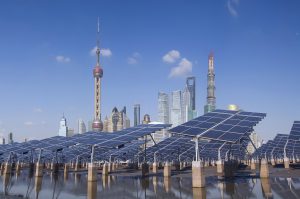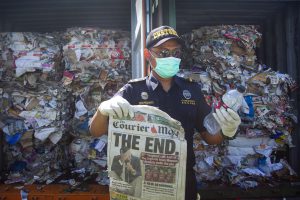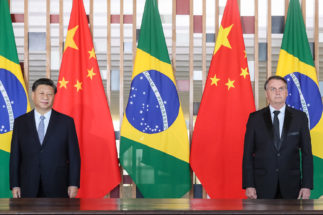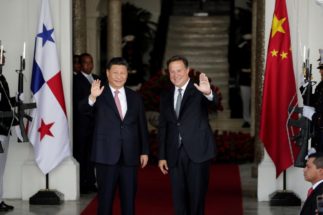The circular economy – a model based on recycling, reusing and repairing raw materials and products – is a domestic political priority in China, written into law in 2008.
It is increasingly seen as a way to mitigate global environmental risks including climate change and marine plastics, and to stimulate innovation and new business models. It is also a main pillar of the EU Green Deal launched late last year.
On 11 March, the European Commission published its new Circular Economy Action Plan, updating the original 2015 plan. It aims to lay out a “future-oriented agenda for achieving a cleaner and more competitive Europe”.
What will it mean for China’s businesses and government policy?
Addressing Europe’s waste shipments
To some degree, the action plan is a policy response to China’s ban on shipments of plastic, unsorted scrap paper and other waste materials, enforced since January 2018. Since then, other countries in Southeast Asia including Malaysia, Thailand and Vietnam have followed suit to reduce waste imports, causing Europe and other exporting countries to struggle with their own domestic waste. The limitations of the linear “take–make–dispose” system have been laid bare.
Illegal shipments of waste from Europe remain a source of concern, and the new action plan aims to ensure that the EU does not export its waste challenges elsewhere.
Furthermore, the goal is to create a healthy EU market for secondary raw materials by introducing requirements for recycled content in products, and to establish EU-wide end-of-waste criteria for certain waste streams.
Towards sustainable product legislation
Although the plan does not include any immediate hard legislation, it does include a comprehensive legislative initiative to ensure that only sustainable products can be sold into the European market. The development of various legislative proposals on sustainable products and regulatory frameworks have already begun. The core of the new legislation will make the existing Ecodesign framework applicable to the broadest possible range of products, including electronics, information and communications technologies (ICT), textiles, furniture and high-impact intermediate products such as steel, cement and chemicals.
Tighter minimum legal requirements for products regarding durability and repairability can be expected. Another objective will be the establishment of a new “right to repair” and better material rights for consumers, for instance regarding the availability of spare parts or access to repair services. In the case of ICT and electronics, this would include upgrading services. Furthermore, changes can be expected so that product guarantees provide more circular and repairable products.
Regarding hazardous substances in products, the plan encourages a shift to “safe-by-design chemicals” and will work towards harmonised systems to track and manage information on substances identified of very high concern. Finally, the plan announces a revision of the EU consumer law to ensure that consumers receive trustworthy and relevant information on products at the point of sale.
China–EU trade and the circular economy
These developments will likely have profound implications for Chinese manufacturers and exporters of these products. To keep selling to the EU market, the new requirements for a wide range of products will need to be adopted.
The circular economy will require significant changes in the way global value chains and trade between countries and regions are conducted. The trade relationship between China and the EU is highly significant. In 2019, China was the largest exporter of goods to the EU (responsible for 19%) and the third largest importer of EU goods (9%). Of the 20 goods which made up 55% of total trade between China and the EU in 2019, 12 belonged to machinery and vehicles, seven to other manufactured products and one to chemicals. The most traded product group was telecommunications equipment and electronics, one of the main groups targeted by the action plan.
Chinese manufacturers of apparel and textiles will need to pay attention to the proposed EU Strategy for Textiles, which aims at boosting the EU market for sustainable and circular textiles, including the market for textile reuse, and addressing the issue of unsustainable fast fashion.
China’s circular economy policy development
The EU’s action plan also offers opportunities for China to give new momentum to the circular economy domestically. The country has long been a pioneer here. Its Circular Economy Promotion Law, which became effective in January 2009, was one of the first circular economy legislations in the world.
In recent years, circular economy policy developments have been developing rapidly internationally, and China could lose its frontrunner position. There is a need to further develop the Chinese circular economy law in line with latest global trends, to raise the level of ambition, improve the administrative system for implementation, develop new incentive mechanisms for industry to re-structure, and new financing instruments to enable investments in circular economy business models. Forthcoming circular economy legislation in China will need to extend beyond industrial strategies, to improving consumer protection rights and addressing unsustainable consumption patterns.
New cooperation opportunities for EU and China
The action plan also shows the need for closer cooperation between China and Europe. Based on existing cooperation agreements and programmes to support a more circular economy, the new plan provides opportunities to work more closely with the EU. This can help to advance the circular economy agenda domestically and overcome some of the domestic opposition from industries that benefit from the existing linear model.
The action plan also proposes to build a “Global Circular Economy Alliance to identify knowledge and governance gaps… and take forward partnership initiatives, including with major economies.” This is an opportunity for China and the EU to play a leading role internationally. They will need to work closely, or the transition to a truly circular global economy will be difficult to achieve.








